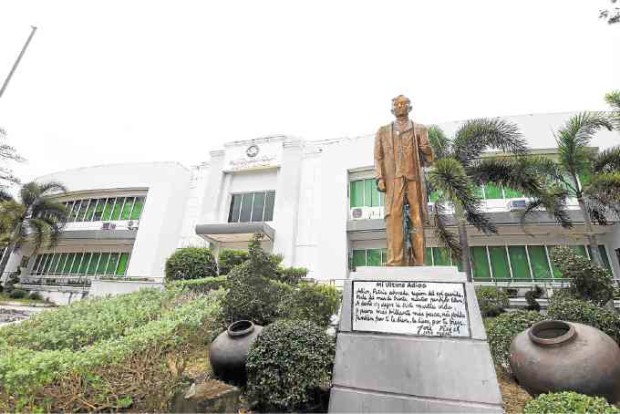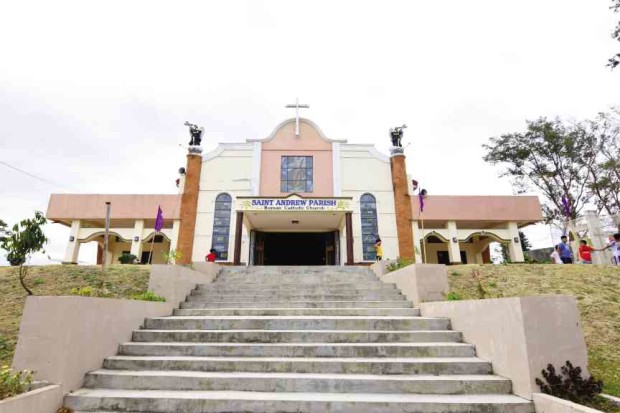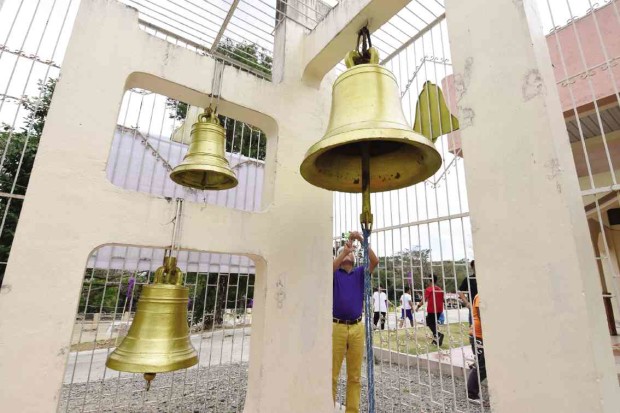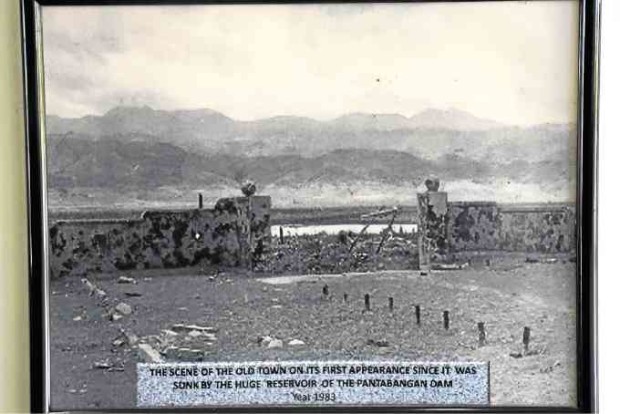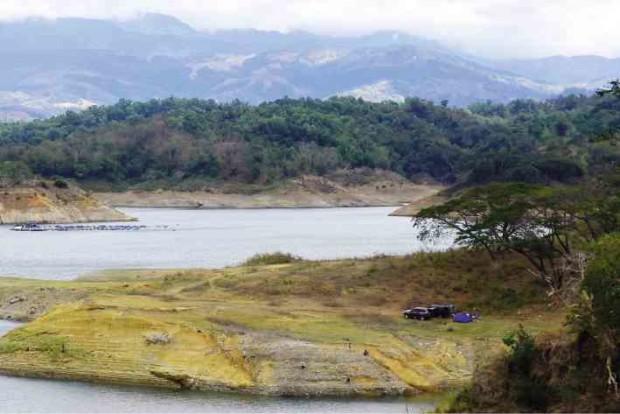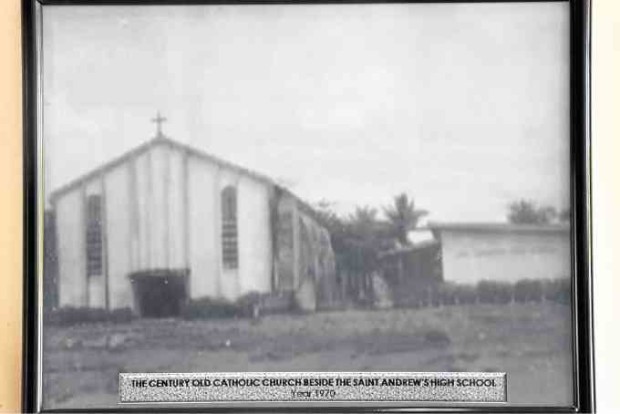Pantabangan rises from watery grave
One Friday morning in October 1973, Josefina Villaflor-Circa took a pained look at her house and surroundings for the last time before boarding a truck that would ferry her family and belongings to another village in Pantabangan town in Nueva Ecija province.
They were headed to a new house on barren terrain overlooking what would be certain tragedy—the drowning of Pantabangan.
The Circas were among 3,000 families that were ordered evacuated to make way for the construction of what is now Pantabangan Dam, the third biggest in Southeast Asia after Bakun Dam in Sarawak, Malaysia, and Magat Dam in Ramon town, Isabela province.
The megaproject took off a year after former President Ferdinand Marcos imposed martial law on the Philippines to crush political dissent and quell opposition to policies he pursued in the name of development.
“To be uprooted from a place you had known since birth was heartrending,” said Circa, now 85.
Article continues after this advertisementMost of the Pantabangan residents were resettled in a place called Tanawaan and in two other sites.
Article continues after this advertisementThe situation then was dizzying, Circa said. So many things had to be done by the doomed community: holding the last procession of the image of their patron saint, tearing down many houses and buildings, exhuming bones from graves in the cemetery for reburial elsewhere, bundling up belongings, and bidding neighbors farewell.
Everyone knew that about three-fourths of the town, or 8,100 hectares of land, would be submerged by the dam’s reservoir.
The same anxiety grips communities again as the present government embarks on multibillion-peso development plans, including the Jalaur River multipurpose project in Iloilo province.
Centuries ago, the Buquid (dwellers of the mountain forest), among them the Id-dul (Aeta) and the Egongot (Ilongot), settled in Pantabangan, which was part of Pampanga Alta or Upper Pampanga.
Spanish colonizers discovered the town in 1572. A chieftain, after his conversion to Christianity, named it Pantabangan, an Ilongot word for “sabang” or “sabangan” (junctions of water streams),” because the place at the foot of Mt. Mabilog, below Mt. Dalimanok between the Sierra Madre and Caraballo mountain ranges, had streams emptying into the upper Pampanga River.
The settlements subsequently formed into one community. A 1749 Philippine map shows it as part of a “corregimiento” (administrative political-military unit), which included the nearby pueblos (or communities) of Santor, Bongabon, Puncan and Baler.
(In later years, Santor and Puncan villages became parts of Bongabon and Carrangalan towns, respectively, while Baler town became part of Aurora province. On April 25, 1801, the corregimiento was elevated to a province, Nueva Ecija.)
In 1969, Congress passed Republic Act No. 5499, which authorized the construction of Pantabangan Dam.
Completed in 1974, the dam is 107 meters high, 1,615 m long, 535 m wide at the base and 12 m on its crest. Its reservoir is 8,100 ha with a peak capacity of 2.3 trillion liters of water.
It is the only dam in the Philippines with three hydroelectric power plants, which generate 320 megawatts of electricity.
Trying times
The dam provides irrigation for an average of 87,300 ha of farmland during the wet season and 82,500 ha during the dry season, according to Florentino David, manager of Upper Pampanga River Integrated Irrigation Systems (UPRIIS), which oversees it.
It also serves certain parts of Bulacan (6,600 ha), Pampanga (4,750 ha) and Tarlac (1,819 ha).
“Life in the new town site of Pantabangan was really difficult,” recalled retired Army Col. Bienvenido Reyes, now one of the municipality’s councilors.
Reyes, who was 17 at the time of the mass evacuation, said the people found the place “oven-hot during summer and muddy during rainy days.” They had no source of livelihood, he said.
“In our old place, residents derived income from logging, fishing and farming. Fishes, edible ferns, crabs, shrimps, vegetables and other food were abundant,” he said.
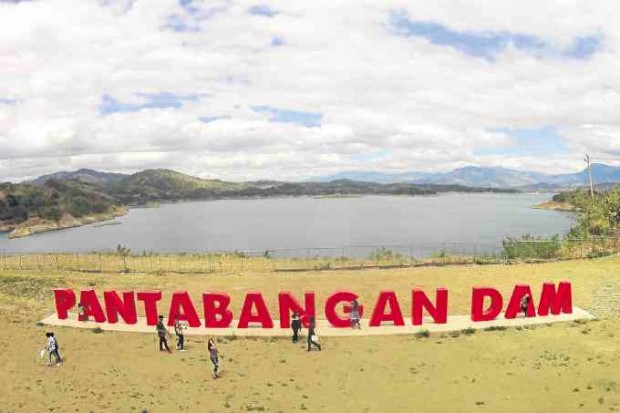
Decades after residents gave up their homes for the dam construction, Pantabangan becomes a major tourist attraction. —REM ZAMORA
After they were given compensation for their properties, they were provided with a lot, a core house and a 3-ha farmland each, he said.
“We were given rice rations, flour, sorghum, powdered milk, canned goods and other supplies,” Reyes said.
The provisions came from the National Grains Authority (now National Food Authority), World Food Organization and World Vision, a Christian relief and development group.
But the assistance stopped, Reyes said, noting that the land given them was “mostly rolling terrain.”
“Most families had to fend for themselves,” he said. Many left to find greener pastures.
If it were any consolation, many sent their children to schools in the cities, said Jocelyn Barcelo, head of the municipal planning and development office. “Many of them went abroad and started sending money back home,” she said.
First-class municipality
Soon, the new Pantabangan town rose to become a first-class municipality, with an average income of P83.7 million from 2004 to 2007.
In 2008, it ranked No. 8 in tax revenue with P182 million generated, according to the Philippine Statistics Authority.
The revenue was mostly from the real property tax paid by CalEnergy, the owner of the build-operate-transfer Casecnan project built to augment water in the reservoir through a 27-kilometer tunnel from two rivers in neighboring Nueva Vizcaya province.
Infrastructure development surged and the economy vastly improved. There was even a move to develop the town into a “Little Baguio” because of its booming economy and cool weather.
Multiple benefits
The dam has evidently provided multiple benefits, not only for its residents of Pantabangan but also for the rest of Nueva Ecija and other provinces, and, in a fairly big measure, for the country’s staple food supply. It has also tamed a river that causes massive flooding, and has been generating electricity.
At least 250,000 people in Nueva Ecija thrive on agriculture.
More than 101,000 rice farmers and about 1,000 seed growers benefit from the dam’s water.
As rice yields in Pantabangan increased, Nueva Ecija became the top rice producer in the Philippines, with an average production of 1.13 million metric tons from 2002 to 2006.
The figure is now nearing 2 million MT as areas used to produce hybrid rice seeds have increased, according to the Philippine Rice Research Institute (PhilRice).
The rice economy is estimated to be worth at least P65 billion.
Failing supply
In 1983, El Niño, the erratic weather phenomenon characterized by severe drought, struck. The water level in the dam dropped to 174 meters above sea level, from a peak of 221 masl.
The farmers were agitated, but the phenomenon also offered residents a chance to revisit the old town site, which became visible when the water receded.
Episodes of low water level in the reservoir played out repeatedly, so the government developed the Casecnan Multi-purpose Irrigation and Power Project. It was designed to capture water from the Casecnan and Taan rivers in Alfonso Castañeda town in Nueva Vizcaya and convey through a 27-km tunnel to the reservoir of Pantabangan Dam.
Built by CalEnergy Water and Energy Corp. at a cost of $676 million, the project was completed in 2004. Its irrigation component, undertaken by the National Irrigation Administration (NIA) in two phases, started in 2008.
The boost in water volume in the reservoir supplied irrigation to an additional 37,200 ha of farms in the northwestern part of the province as well as some areas of Anao, Victoria and Ramos towns in neighboring Tarlac province.
Philippine National Oil Company Renewables Corp. put up a 1-megawatt hydroelectric plant in Pantabangan’s main irrigation canal at Barangay Poblacion West in Rizal town, Nueva Ecija and operated it in collaboration with the NIA and the National Development Co., an agency under the Department of Trade and Industry.
Plans are afoot to build similar plants in other irrigation canals in the province, so water can generate electricity before it is released for irrigation.
Mismanagement
Years later, however, Pantabangan suffered from “fiscal mismanagement,” resulting in months of power interruptions and municipal employees not being paid their salaries and other obligations, Reyes said.
Political and legal imbroglios also led to the town having two mayors.
The biggest crisis was caused by an executive order issued by former President Benigno Aquino III that reduced the real property taxes of independent power producers, including the dam operators.
These difficulties have since passed, Mayor Roberto Agdipa said. “We have paid the back salaries of our employees and our debt for the power bill is also being paid,” he said.
Ecotourism
New development plans have been set, among them a P600-million pump storage hydropower project, which would generate 600 megawatts and store potable water.
Cristino Castillo, manager of the dam and reservoir division of NIA-UPRIIS, said two more major benefits had yet to be tapped from the dam—the use of its impounded water for domestic and industrial purposes and its undeveloped attractions for ecotourism.
The installation of facilities, much like those in La Mesa Dam that supplies filtered water to Metro Manila, can be done, Castillo said. “It can serve the needs of areas downstream of the dam site. It can even supply water to La Mesa Dam through our irrigation facilities in Bulacan.”
For ecotourism, he said a development plan was being drawn up for a pilgrimage site on a hill on one side of the reservoir’s embankment, a camping area near the middle of the dam, a winding trail for hiking and facilities for water sports.
“For lodging places, we are now completing the renovation of our guest house, which overlooks the dam’s complex, and the cottages used by the dam’s builders,” he said.
Castillo, an engineer, said he expected the area to become one of the top tourist spots in the Philippines.
